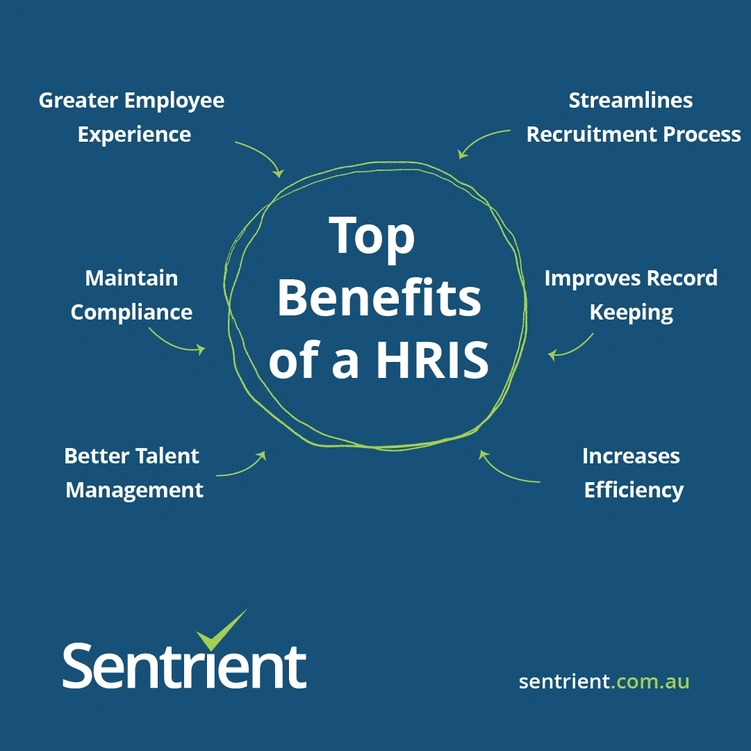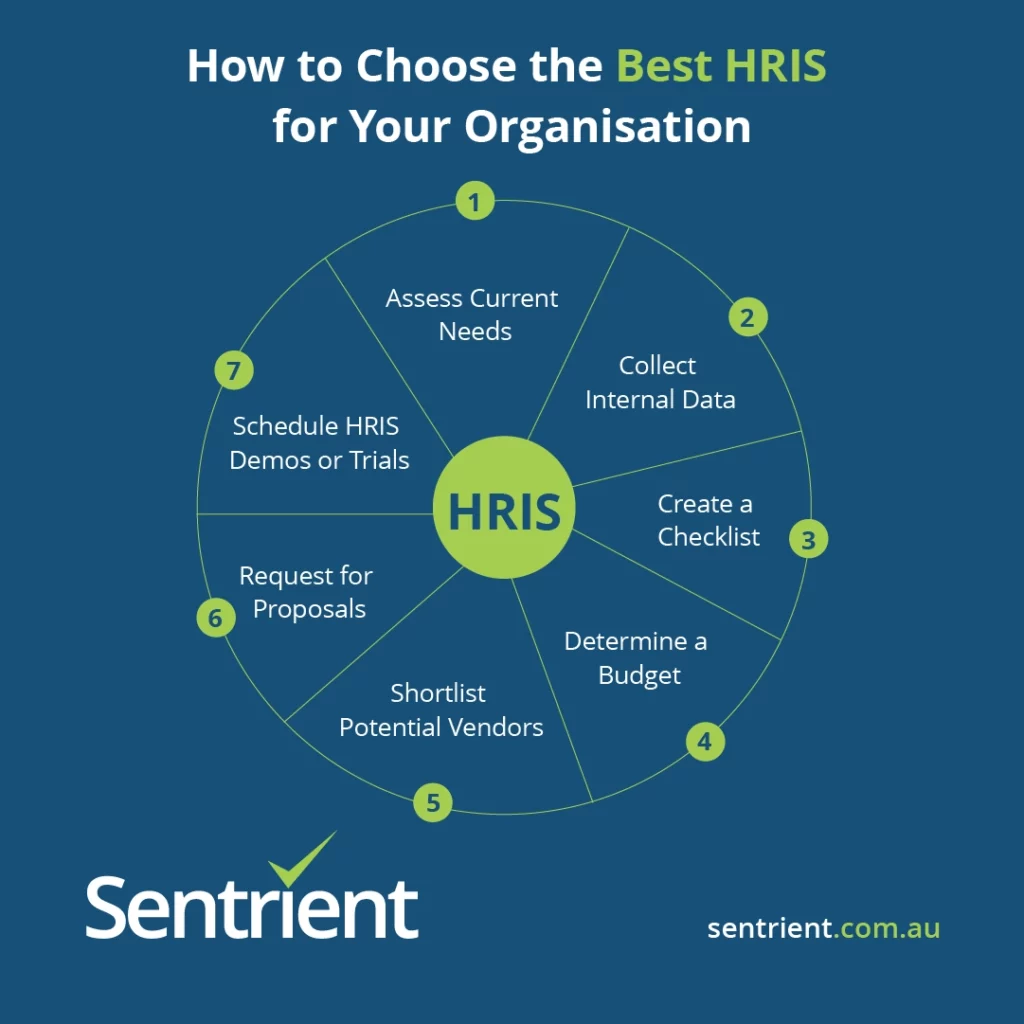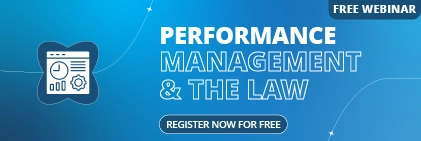Nowadays, managing your organisation’s workforce effectively has become more crucial than ever.
Whether you’re handling employee data, processing payroll, or keeping track of attendance, the sheer volume of HR-related tasks can feel overwhelming.
This is where a Human Resource Information System (HRIS) comes into play.
For the uninitiated, HRIS is a sophisticated yet user-friendly system that brings together all your human resources processes under one roof.
Gone are the days of shuffling through endless paperwork or juggling multiple spreadsheets. Modern businesses are increasingly turning to HRIS solutions to streamline their HR operations, enhance efficiency, and create better experiences for both HR professionals and employees alike.
Throughout this comprehensive guide, you’ll discover everything you need to know about a HRIS.
Whether you’re a small business owner looking to modernise your HR processes, an HR professional seeking to understand HRIS better, or simply curious about how these systems can transform workplace management, this guide will serve as your roadmap to understanding and leveraging the power of HRIS effectively.
What is a Human Resource Information System (HRIS)?
A HRIS is a comprehensive software solution that transforms how you manage your workforce.
At its core, a HRIS serves as the technological backbone of modern HR operations, seamlessly integrating various aspects of human resource management into a single, unified platform.
In simple words, it acts as your organisation’s central nervous system for employee data and HR processes. Just as your nervous system coordinates different bodily functions, a HRIS coordinates various HR activities.
Unlike traditional paper-based systems or disconnected software solutions, a HRIS brings together all your HR-related tasks and information into one cohesive ecosystem.
This integration means you can easily track an employee’s journey from their initial job application through to their departure.
As a matter of fact, modern HR info systems have evolved significantly. Today’s systems incorporate sophisticated features like artificial intelligence, machine learning, and advanced analytics to help you make data-driven decisions about your workforce.
They can predict hiring needs, identify retention risks, and even suggest personalised development paths for your employees.
Different Types of HRIS
When exploring various HR info systems, you’ll discover that they come in different types, each designed to meet specific organisational needs and objectives.
Understanding these distinct categories will help you identify which type of system best aligns with your organisation’s requirements and goals.
Operations HRIS
Operations HRIS’s focus on the fundamental day-to-day management of your workforce.
These systems handle essential functions like employee record management, attendance tracking, payroll processing, and basic benefits administration.
In simple words, this type of HRIS helps you manage routine tasks that keep your organisation running smoothly. This type of system particularly suits organisations that need to streamline their basic HR operations and maintain accurate employee records efficiently.
Tactical HRIS
Tactical HRIS’s take your HR management a step further by incorporating analytical capabilities.
These systems help you make data-driven decisions about recruitment, training, career planning, and compensation. With a Tactical HRIS, you can analyse training effectiveness, evaluate recruitment channels, and make informed decisions about employee development.
It’s particularly useful when you need to understand trends and patterns in your HR data to improve your decision-making process.
Strategic HRIS
Strategic HRIS’s represent the most advanced tier of HR systems, focusing on long-term planning and high-level decision-making.
These systems excel at workforce planning, succession management, and strategic talent development. In addition, it comes with sophisticated forecasting tools that help predict future HR needs and potential challenges.
Strategic HRIS’s are especially valuable when you need to align your HR initiatives with broader organisational goals and maintain a competitive edge in talent management.
Comprehensive HRIS
A Comprehensive HRIS combines operational, tactical, and strategic capabilities into one integrated solution.
These systems offer a complete suite of HR tools, from basic employee data management to advanced strategic planning features. While they provide the most extensive functionality, they also require significant investment in terms of implementation and training.
Consider whether your organisation needs such a wide range of features before choosing this option.
Limited-Function HRIS
Limited-Function HRIS’s specialise in specific HR areas rather than attempting to cover all bases.
These focused systems excel at performing a narrow range of functions with high efficiency. You might choose a Limited-Function HRIS that specialises in recruitment and onboarding, or one that focuses solely on payroll and benefits administration.
These systems often prove cost-effective for organisations with specific, targeted HR needs.
HRIS vs HRMS vs HCM vs HXM: Key Differences
When you’re exploring different HRIS options, you’ll often encounter various acronyms that might seem similar at first glance.
Let’s break down the key differences between these systems to help you understand which one might best suit your needs.
| HRIS | HRMS | HCM | HXM | |
|---|---|---|---|---|
| Primary Focus | Core HR data and processes | Comprehensive HR management | Complete employee lifecycle | Employee experience and engagement |
| Main Purpose | Managing employee information and basic HR functions | Combining HR functions with talent management | Strategic workforce management and development | Enhancing employee experience and satisfaction |
| Key Features | Employee database, Payroll processing, Benefits administration, Time and attendance, Basic reporting | All HRIS features, Performance management, Training tracking, Recruitment tools, Advanced analytics | All HRMS features, Talent acquisition, Succession planning, Workforce planning, Strategic analytics | All HCM features, Employee feedback tools, Personalised learning, Well-being programs, Experience management |
| Target Users | Small to medium-sized organisations | Medium to large organisations | Large enterprises | Modern organisations focused on employee experience |
| Complexity Level | Basic to moderate | Moderate to high | High | High with focus on user experience |
| Integration Level | Basic integration with core HR systems | Moderate integration across HR functions | Extensive integration across business functions | Complete integration with focus on user interfaces |
Understanding these differences will help you make an informed decision about which type of system best aligns with your organisation’s needs and goals.
Remember that the importance of HRIS selection lies not just in choosing the most advanced system, but in finding the one that best fits your specific requirements and can grow with your organization.
Key Functions of HRIS
Understanding the core functions of a modern HRIS is essential for making the most of your HR technology investment.
Let’s check them out one-by-one.
Employee Data Management
At the heart of every HRIS lies robust employee data management capabilities.
This function serves as your organisation’s central repository for all employee information. You can store and manage everything from basic personal details to employment history, certifications, and performance records.
The system allows you to update information in real-time, ensuring your employee records are always current and accurate.
What makes modern employee data management particularly powerful is its accessibility and organisation. You can easily search for specific employee information, generate custom reports, and track changes over time.
The system also helps you maintain data integrity by preventing duplicate entries and ensuring consistent formatting across all records.
Most importantly, it provides secure storage for sensitive employee information, with controlled access levels for different users within your organisation.
Benefits Administration
Managing employee benefits can be complex, but a HRIS simplifies this process significantly.
The benefits administration function helps you handle everything from healthcare plans to retirement programs and various other perks. You can easily track enrolment periods, manage employee selections, and monitor costs associated with different benefit programs.
The system streamlines benefits administration by automating many routine tasks.
For instance, it can automatically notify employees about enrolment deadlines, track eligibility criteria, and update benefit selections during life events like marriage or the birth of a child. This automation not only saves time but also reduces errors that often occur with manual processing.
The system also provides valuable insights into benefit utilisation and costs, helping you make informed decisions about your benefits packages.
Payroll Processing
Payroll processing is another crucial function that a HRIS handles with precision.
The system integrates time and attendance data with wage information to calculate employee pay accurately. It automatically factors in variables like overtime, bonuses, deductions, and tax withholdings, ensuring each paycheck is processed correctly.
What makes this function particularly valuable is its ability to handle complex payroll scenarios.
Whether you’re managing different pay rates, processing multiple pay schedules, or dealing with various tax jurisdictions, the system can handle these complexities efficiently.
It also maintains detailed records of all payroll transactions, making it easier to generate reports for accounting purposes and comply with tax regulations.
Time & Attendance Management
Managing your workforce’s time and attendance becomes straightforward with a HRIS.
The system accurately tracks working hours, overtime, leave, and absences for all your employees. You can set up flexible scheduling rules, manage shift patterns, and monitor attendance trends.
The system also helps you handle different types of leave requests, from annual holidays to sick days and special circumstances.
What makes this function particularly valuable is its ability to integrate with various time-tracking methods. Whether you’re using biometric systems, card readers, or mobile check-ins, the HRIS can collect and process this data automatically. You can easily generate attendance reports, identify patterns, and ensure compliance with working time regulations.
The system also helps you manage overtime more effectively by tracking hours worked and automatically calculating overtime pay rates.
Embedded Localisation
In today’s global business environment, embedded localisation is crucial for organisations operating across different regions.
This function ensures your HRIS adapts to local requirements, whether they’re related to language, currency, tax regulations, or labour laws. You can manage multiple locations while maintaining compliance with local regulations and cultural practices.
The localisation features allow you to handle country-specific HR processes effortlessly.
For instance, you can set up different payroll calculations based on local tax laws, manage region-specific benefits, and generate reports that comply with local reporting requirements.
The system can also display information in multiple languages and handle different date formats, making it accessible to employees across various locations.
Employee Self-Service
Employee self-service (ESS) can transform how your workforce interacts with HR processes.
This function empowers your employees to manage their own information and handle routine HR tasks independently. Through a user-friendly portal, employees can update their personal details, view pay slips, request leave, access company policies, and manage their benefits enrolment.
The self-service function reduces the administrative burden on your HR team while improving employee satisfaction. In fact, your staff members will appreciate the ability to access their information and make changes whenever needed, without having to wait for HR assistance.
Managers can also benefit from self-service features, accessing team information, approving requests, and generating reports directly through the system.
Organisational Structures
A HRIS helps you maintain and visualise your organisation’s structure effectively.
You can create detailed organisational charts that reflect reporting relationships, departments, and hierarchies across your company. The system makes it easy to update these structures as your organisation evolves, whether through growth, restructuring, or other changes.
Through this function, you can map out complex reporting relationships and track how different parts of your organization connect.
The system allows you to model different structural scenarios before implementing changes, helping you make informed decisions about organizational design.
The organisational structure function also supports workforce planning by providing clear visibility into your current setup. You can easily identify gaps in your organisation, track vacant positions, and plan for future staffing needs.
This visibility helps with succession planning too – you can map out career paths and identify potential internal candidates for key positions.
Another valuable aspect is the ability to assign different access rights and workflows based on organisational structure. For instance, you can ensure managers only see information about their own teams or set up approval chains that follow your organisational hierarchy.
This helps maintain data security while streamlining HR processes according to your organisation’s structure.
Top Benefits of a HRIS
When implementing a HRIS, you’ll discover numerous advantages that transform how you manage your workforce.

1. Streamlines Recruitment Process
An HRIS revolutionises your hiring process from start to finish. Using a HRIS, posting job openings, screening candidates, and managing applications becomes significantly more straightforward.
The system allows you to create standardised job postings, automatically screen CVs for relevant qualifications, and track candidates throughout the hiring process.
What makes this particularly powerful is the system’s ability to maintain a talent pool of previous applicants. When new positions open up, you can quickly search through your existing database of candidates.
The system also helps you analyse your recruitment metrics, showing which channels bring in the best candidates and how long your hiring process typically takes.
2. Improves Record Keeping
Gone are the days of shuffling through paper files or searching through multiple spreadsheets.
A modern HRIS transforms how you maintain employee records. Every piece of information, from employment contracts to performance reviews, is stored securely in one centralised digital location.
The system ensures your records are not just stored but properly organised and easily accessible. You can quickly retrieve specific documents when needed, track document versions, and set up automatic notifications for important updates or renewals.
More importantly, the system helps maintain data accuracy by reducing manual entry errors and ensuring consistent formatting across all records.
3. Increases Efficiency
One of the most significant benefits of implementing a HRIS is the dramatic increase in operational efficiency.
By automating routine tasks, the system frees up your HR team to focus on more strategic initiatives. Tasks that once took hours can now be completed in minutes, from processing payroll to generating reports.
These efficiency improvements don’t just save time – they also reduce costs and minimize errors.
Your HR team can process more tasks with greater accuracy, leading to better service delivery and increased productivity across the organization.
4. Better Talent Management
With a HRIS, you can take a more strategic approach to managing your talent.
The system helps you track employee performance, identify skill gaps, and create targeted development plans. You can monitor career progression, set clear goals, and measure achievements consistently across your organization.
The system makes it easier to identify high-potential employees and ensure they’re getting the development opportunities they need. You can track training completion, certifications, and skills development, helping you build a more capable workforce.
This systematic approach to talent management helps reduce turnover by ensuring employees have clear career paths and development opportunities within your organisation.
5. Maintain Compliance
Staying compliant with employment laws and regulations becomes significantly easier with a HRIS.
The system helps you track important deadlines, maintain required documentation, and ensure your HR processes meet legal requirements. It can automatically flag when certifications are due to expire, when mandatory training needs to be renewed, or when employment documents need updating.
The system also helps you maintain accurate records for auditing purposes. You can quickly generate reports showing compliance with various regulations, from working time directives to equal opportunity requirements.
This reduces the risk of non-compliance penalties and helps protect your organisation from potential legal issues.
6. Greater Employee Experience
A HRIS significantly improves the overall employee experience within your organisation.
Through self-service portals, employees gain more control over their information and HR-related tasks. They can easily access their pay information, request time off, update personal details, and participate in performance reviews without waiting for HR assistance.
The system also creates a more transparent environment where employees can clearly see their benefits, career opportunities, and development paths. This transparency helps build trust and engagement.
The automated processes mean employees receive faster responses to their requests, whether they’re applying for leave or submitting expense claims.
Additionally, modern HRIS platforms often include features for employee feedback and engagement. You can conduct regular surveys, gather feedback on workplace initiatives, and measure employee satisfaction more effectively.
This helps you identify and address potential issues before they impact employee retention, creating a more positive and engaging work environment.
Must-Have Features in a HRIS
When you’re choosing a HRIS for your organisation, certain features stand out as absolutely essential.
These core features will determine how effectively your system can support your HR operations and meet your employees’ needs.
1. Payroll Integration
Your HRIS should seamlessly integrate with your payroll processes, handling everything from basic salary calculations to complex payment scenarios.
The system needs to automatically incorporate attendance data, calculate wages, and process deductions. This integration helps you manage different pay rates and overtime payments effectively.
You’ll also benefit from automatic tax calculations for various locations and tax form generation. With proper payroll integration, you can ensure accurate and timely payments while reducing manual processing time.
2. Data Security
In today’s digital landscape, protecting HR data is crucial.
Your HRIS needs robust security features to safeguard sensitive employee information. This includes role-based access controls to manage who can view and edit different types of data.
The system should encrypt all information, maintain detailed audit trails, and perform regular automatic backups. Strong authentication measures can help prevent unauthorised access, while comprehensive security features ensure compliance with data protection regulations.
3. Employee Self-Service
An effective self-service portal makes HR processes more accessible to your employees.
Through this portal, staff members can handle routine tasks independently, from updating personal information to accessing pay slips. They should be able to submit leave requests, view their benefits, and access company documents whenever needed.
This self-service capability not only improves the employee experience but also reduces the administrative burden on your HR team, allowing them to focus on more strategic activities.
4. Compliance Confidence
Your HRIS should give you peace of mind when it comes to regulatory compliance.
The system needs to track and manage compliance requirements automatically, helping you stay on top of employment laws and regulations. You’ll find this particularly useful for managing mandatory training deadlines, certification renewals, and required documentation.
When regulations change, your system should help you implement and track these updates across your organisation.
For organisations operating across different regions, the system should handle varying compliance requirements for each location. It needs to maintain accurate records of working hours, leave entitlements, and other employment data that regulators might review.
Having these compliance tools integrated into your daily HR operations helps protect your organisation from potential penalties and ensures you’re always audit-ready.
5. Paperless Onboarding
A digital onboarding process through your HRIS transforms how you welcome new employees.
Instead of shuffling through stacks of papers, you can create smooth, paperless workflows that guide new hires through each step of the onboarding process. The system should allow new employees to complete their documentation electronically and access important information before their first day.
The paperless approach helps coordinate tasks across different departments, from HR to IT, ensuring nothing falls through the cracks. You can track progress in real-time and automatically remind people about pending tasks. This not only makes the process more efficient but also creates a better experience for new hires.
Whether you’re onboarding one person or a hundred, the system helps maintain consistency while keeping all documentation secure and easily accessible.
6. Performance Management
Your HRIS should provide comprehensive tools for managing employee performance effectively.
The system needs to facilitate regular performance reviews, goal setting, and progress tracking throughout the year. You can set up customised evaluation forms, schedule automatic reminders for reviews, and maintain a clear record of performance discussions and outcomes.
The system should also help managers and employees track goals and objectives, making it easier to align individual targets with broader organisational goals.
The performance management features should support continuous feedback rather than just annual reviews. You need tools for recording regular check-ins, tracking development plans, and documenting performance-related conversations. This ongoing approach helps identify and address issues early while supporting employee growth and development.
The system should also provide analytics to help you spot performance trends and make informed decisions about training, promotions, and succession planning.
7. Reward and Recognition
A robust reward and recognition system helps you acknowledge and celebrate employee achievements effectively.
Your HRIS should help you manage both monetary and non-monetary recognition programs, from performance bonuses to peer recognition initiatives. The system needs to track different types of rewards, maintain clear criteria for recognition, and ensure fair and consistent application across your organisation.
You should be able to set up various recognition programs that align with your company culture and values. The system can help automate reward calculations based on performance metrics, track budget allocations for different reward programs, and maintain a history of recognition for each employee.
This helps create a more engaging workplace where good work is consistently acknowledged and rewarded.
Whether it’s managing annual bonuses, spot awards, or peer recognition programs, your HRIS should make it easy to celebrate employee contributions while maintaining transparency and fairness in how rewards are distributed.
How to Choose the Best HRIS for Your Organisation

Let’s walk through the crucial steps to help you make the right choice for your needs.
Step 1- Assess Current Needs
First of all, you need to take a close look at how your HR team handles their daily work.
You should carefully examine which processes are currently causing the most headaches and where bottlenecks occur in your workflows.
It’s important to pay attention to what your employees and managers say about existing HR processes, as their feedback can highlight critical areas for improvement.
You’ll need to consider any specific requirements your organisation has, such as managing multiple office locations or handling complex pay structures. You should also think about industry-specific regulations you need to comply with.
By understanding these fundamental needs, you’ll be better equipped to find a system that offers solutions to your actual problems rather than being swayed by flashy but unnecessary features.
Step 2- Collect Internal Data
Next, you need to start gathering detailed information about your current HR operations and processes.
You should look at your workforce numbers, including how many employees you have in each department and location. It’s essential to track how much time your HR team currently spends on different tasks, from processing payroll to managing leave requests.
In addition, you should also reach out to department heads and employees to understand their experiences with HR processes. You should review your current reporting requirements and the metrics you track regularly.
It’s important to document any integration requirements with other systems you’re currently using, as this will affect your choice of HRIS.
Step 3- Create a Checklist
You need to develop a comprehensive list of requirements for your new HRIS.
You should divide this list into must-have features that are essential for your operations and nice-to-have features that would be beneficial but aren’t critical. It’s important to include technical requirements like system compatibility and security standards in your checklist.
You’ll need to consider your available budget and desired implementation timeline when creating this list. You should think about your organisation’s growth plans and ensure any system you choose can scale with you.
It’s essential to use this checklist as your primary tool when evaluating different HRIS options to ensure you don’t overlook any crucial requirements during the selection process.
Step 4- Determine a Budget
Now, you need to establish a clear budget for your HRIS investment. You should consider both the immediate costs and long-term expenses that come with implementing a new system.
It’s essential to account for the initial licensing or subscription fees, as well as implementation costs, training expenses, and any necessary hardware upgrades.
You’ll need to calculate the total cost of ownership over at least three to five years. You should factor in annual maintenance fees, potential upgrade costs, and ongoing support expenses. It’s important to consider any hidden costs, such as data migration expenses or the need for additional IT support.
Additionally, it’s important to estimate the return on investment by considering how the system will reduce current expenses and improve efficiency.
Step 5- Shortlist Potential Vendors
You need to begin researching HRIS vendors who match your requirements and budget.
You should start by looking at vendors with experience in your industry and organisations of similar size. It’s important to read customer reviews, case studies, and independent assessments of different systems to understand their strengths and weaknesses.
For this, you should create a shortlist of three to five vendors who best meet your criteria. Furthermore, you need to examine each vendor’s financial stability and track record in the market.
Next, you need to look at their product roadmap to ensure their future development plans align with your organisation’s needs.
Finally, you should check their references and speak with other organisations using their system to get real-world feedback about their experience.
Step 6- Request for Proposals
You need to create a detailed Request for Proposal (RFP) document to send to your shortlisted vendors.
You should clearly outline your requirements, technical specifications, and expected deliverables in this document. It’s important to include specific questions about pricing, implementation timelines, training support, and ongoing maintenance.
We recommend asking each selected vendor to provide detailed information about their security measures and compliance capabilities. In addition, you should also request clear explanations of their pricing structure, including any additional costs for extra features or users.
Last but not least, it’s essential to set a reasonable deadline for vendors to respond and make yourself available to answer any questions they might have about your requirements.
Step 7- Schedule HRIS Demos or Trials
Once you’ve received and reviewed the proposals, you need to arrange demonstrations or trials of the most promising systems.
You should prepare a list of specific scenarios and processes you want to see demonstrated during these sessions. It’s important to involve key stakeholders from different departments in these demonstrations to get diverse perspectives on each system.
Additionally, we suggest requesting hands-on trials whenever possible to really understand how the system works in practice. You should test the user interface, try out key features, and evaluate how intuitive the system is to use.
Finally, you should gather feedback from everyone involved in the demos to help make your final decision.
Best HRIS Software Examples
1. Sentrient
Sentrient offers a comprehensive HRIS solution that’s particularly well-suited for Australian businesses.
This cloud-based platform combines core HR functions with powerful compliance management features, making it especially valuable for organisations that need to maintain strict regulatory compliance while managing their workforce efficiently.
The system stands out for its user-friendly interface and strong focus on workplace compliance and training management.
Sentrient’s platform helps you automate many aspects of HR administration while ensuring your organisation stays up-to-date with Australian workplace laws and regulations.
Our solution is particularly popular among medium-sized businesses looking for a balance between functionality and ease of use.
The platform is particularly strong in areas like workplace compliance, policy management, and employee training, though organisations needing extensive international HR capabilities might find it somewhat limited.
For Australian businesses prioritising compliance and straightforward HR management, Sentrient offers a solid solution that balances functionality with ease of use.
Pros & Cons
Pros:
- Strong compliance management features
- User-friendly interface with intuitive navigation
- Excellent customer support with Australia-based team
- Customisable reporting
- Robust policy and procedure management
- Competitive pricing for small to medium businesses
Cons:
- Limited payroll integration options
- Custom reporting can be complex for new users
2. SAP SuccessFactors
SAP SuccessFactors stands out as one of the leading enterprise-level HRIS solutions in the market, offering a comprehensive suite of HR tools designed for large and complex organisations.
This cloud-based system provides end-to-end HR functionality, from core HR and payroll to advanced features like talent management and workforce analytics.
As part of the SAP ecosystem, it offers robust integration capabilities with other SAP products and third-party applications.
The platform is popular to handle global HR operations, supporting multiple languages, currencies, and regional compliance requirements.
With powerful analytics and artificial intelligence capabilities, SuccessFactors helps organisations make data-driven HR decisions and improve workforce planning. SAP SuccessFactors particularly suits large enterprises with complex HR needs and global operations.
While the system offers powerful capabilities, organisations should carefully consider the resources required for implementation and maintenance before making their decision.
Pros & Cons
Pros:
- Highly customisable
- Multi-language and currency support
- Comprehensive suite of HR modules covering all major functions
- Advanced talent management and succession planning tools
Cons:
- Higher price point compared to many competitors
- Complex implementation process
- Can be overwhelming for smaller organisations
3. UKG
UKG (Ultimate Kronos Group) offers a robust HRIS solution that combines the strengths of Ultimate Software and Kronos following their merger.
The platform is known for its exceptional workforce management capabilities, particularly in time and attendance tracking, scheduling, and payroll processing.
UKG provides different solutions tailored to various business sizes, from UKG Pro for larger enterprises to UKG Ready for mid-sized organisations. Not only that but the system also provides a unified platform that handles both strategic HR functions and day-to-day operational needs.
With its strong emphasis on employee experience and engagement, UKG incorporates advanced AI-driven analytics and mobile-first design principles.
The best part – UKG is capable of handling complex pay rules and compliance requirements, making it particularly valuable for organisations with diverse workforce management needs.
UKG particularly shines in industries with complex workforce management needs, such as healthcare, manufacturing, and retail.
The platform’s comprehensive feature set and strong support make it a solid choice for organisations seeking a complete HR and workforce management solution.
Pros & Cons
Pros:
- Exceptional workforce management
- Strong payroll processing with built-in compliance features
- Advanced employee scheduling tools
- User-friendly interface with modern design
- Strong customer support infrastructure
- Comprehensive suite of HR tools
Cons:
- Implementation can be lengthy and complex
- Integration with non-UKG systems can be challenging
- May be too complex for small businesses
4. BambooHR
BambooHR offers a user-friendly HRIS solution specifically designed for small and medium-sized businesses.
The platform strikes an excellent balance between functionality and simplicity, providing essential HR features without overwhelming users with unnecessary complexity.
In fact, the intuitive interface and streamlined processes make it particularly appealing for organisations looking to move away from manual HR management.
The system focuses on delivering core HR functions while maintaining a clean, modern user experience. BambooHR excels in areas like applicant tracking, onboarding, time-off management, and employee self-service.
While it may not offer the extensive features of enterprise-level systems, it provides the essential tools most small to medium businesses need for effective HR management.
BambooHR is particularly well-suited for growing businesses that need a straightforward, efficient HR solution without the complexity of enterprise-level systems.
Pros & Cons
Pros:
- Modern, user-friendly interface
- Strong employee self-service portal
- Excellent onboarding and applicant tracking features
- Clean, modern design and intuitive navigation
- Competitive pricing for small businesses
- Good customer support
- Easy implementation process
Cons:
- Limited payroll features (available as add-on)
- Limited customisation options
- Reporting features could be more robust
- Performance management tools are fairly basic
5. Zoho People
Zoho People stands out as a cost-effective HRIS solution that offers impressive functionality as part of the broader Zoho ecosystem.
The platform provides a comprehensive set of HR tools designed to help small and medium-sized businesses streamline their HR processes.
The system offers a good balance of features, from core HR functions like leave management and time tracking to more advanced capabilities such as performance management and recruitment.
Zoho People’s strength lies in its flexibility and customisation options, allowing organisations to adapt the system to their specific needs while maintaining affordability.
The platform’s global accessibility and multi-language support make it suitable for businesses operating across different regions.
Zoho People particularly suits businesses looking for an affordable HRIS solution with good customisation options. It’s especially valuable for organisations already invested in the Zoho ecosystem, though its standalone capabilities make it a viable option for any small to medium-sized business seeking a flexible HR solution.
Pros & Cons
Pros:
- Competitive pricing with flexible plans
- Strong integration with other Zoho applications
- Highly customisable forms and workflows
- Comprehensive employee self-service portal
- Built-in e-signing capabilities
- Multi-language and multi-currency support
Cons:
- Interface can feel cluttered at times
- Limited integration with non-Zoho applications
- Payroll features are limited to certain regions
4 HRIS Management Best Practices
To make the most of your HRIS investment, it’s crucial to follow established best practices in system management and maintenance.
Here are four key practices that will help ensure your HRIS continues to deliver value to your organization.
1- Ensure Proper System Setup and Configuration
Setting up your HRIS correctly from the start is crucial for long-term success.
You need to carefully map out your organisation’s workflows, reporting structures, and approval processes before configuring the system. Each module should be set up to reflect your actual business processes while taking advantage of automation opportunities where possible.
A well-configured HRIS requires clear standards for data entry and system usage. You should establish naming conventions, mandatory fields, and standardised formats for all information entered into the system.
This standardisation helps maintain data consistency and makes reporting more reliable.
It’s also important to regularly review and update these configurations as your organisation grows and changes.
2- Maintain Data Quality and Security
Data quality and security form the foundation of an effective HRIS.
Your system is only as good as the data it contains, so implementing strict quality control measures is essential. Regular data audits help identify inconsistencies, duplicates, or outdated information that require attention. Similarly, establishing clear processes for data entry and updates helps maintain accuracy across all modules.
Additionally, security measures need to be robust yet practical. This means implementing appropriate access levels for different user groups and ensuring sensitive information is properly protected.
Training users in data security best practices and maintaining detailed logs of system access and changes is also crucial for maintaining data integrity.
3- Provide Comprehensive Training and Support
Effective training is essential for maximising your HRIS investment.
Users need more than just basic system navigation skills – they need to understand how the system supports their specific role and responsibilities.
Initial training should be thorough and role-specific, focusing on the features and functions most relevant to each user group.
Ongoing support is just as important as initial training. Users need access to resources and assistance when they encounter challenges or questions. Additionally, creating a knowledge base of common issues and solutions helps users find answers quickly.
Most importantly, you must conduct regular check-ins and refresher sessions to ensure users stay confident in their system use and are aware of new features or updates.
4- Regular Monitoring and Optimisation
Continuous monitoring of your HRIS helps identify both problems and opportunities for improvement.
For this, you need to track system usage patterns, common support requests, and user feedback to understand how the system is being used in practice. This information helps you identify areas where additional training or process adjustments might be needed.
In addition to this, conducting regular system optimisation also helps to ensure your HRIS continues to meet your organisation’s needs effectively.
This includes reviewing workflows for efficiency, checking that reports provide meaningful insights, and evaluating whether current features are being used to their full potential.
Last but not least, you must make sure to periodically assess the system’s overall performance against your business objectives. This includes evaluating ROI, user satisfaction, and the achievement of specific HR goals.
Regular reviews help ensure your HRIS continues to support your organisation’s growth and evolution effectively.
Conclusion
As organisations continue to evolve, implementing the right HRIS has become more crucial than ever.
Among the various HRIS solutions we’ve discussed, Sentrient stands out as a particularly strong choice, especially for Australian businesses.
What sets Sentrient apart is its perfect balance of comprehensive HR functionality and robust compliance management features.
The platform offers an intuitive user interface that makes day-to-day HR tasks more manageable while ensuring your organisation stays compliant with Australian workplace laws and regulations.
Whether you’re looking to streamline your HR processes, improve compliance management, or enhance employee training and development, Sentrient offers a complete solution that grows with your organisation.
FAQs
1. What does HRIS stand for?
HRIS stands for Human Resource Information System. It represents a software solution designed to manage and process an organisation’s HR-related data and procedures. This term is sometimes also referred to as a human resource management information system (HRMIS) in some contexts.
2. What is a HRIS system?
A HRIS system is a software platform that combines various HR functions into one integrated solution. It helps manage employee data, automate HR processes, and handle tasks like payroll, benefits administration, time tracking, and performance management.
3. When does it make sense to implement HRIS?
It makes sense to implement an HRIS when your organisation is experiencing challenges with manual HR processes, struggling with data accuracy, or spending too much time on administrative tasks.
4. What business problems does a HRIS solve?
A HRIS solves numerous business challenges, including reducing manual paperwork, eliminating data entry errors, streamlining recruitment and onboarding processes, improving compliance management, and providing better workforce insights. It also helps address issues like inefficient time tracking, complicated leave management, and inconsistent HR reporting.
5. What is a HRIS analyst?
A HRIS analyst is a professional who specialises in managing and optimising HR information systems. They are responsible for maintaining the HRIS, training users, generating reports, analysing HR data, and ensuring the system meets the organisation’s needs.
6. Can a HRIS be accessed remotely?
Yes, modern HRIS platforms, especially cloud-based solutions, can be accessed remotely from any location with an internet connection. This feature has become increasingly important with the rise of remote work and hybrid workplace models.





